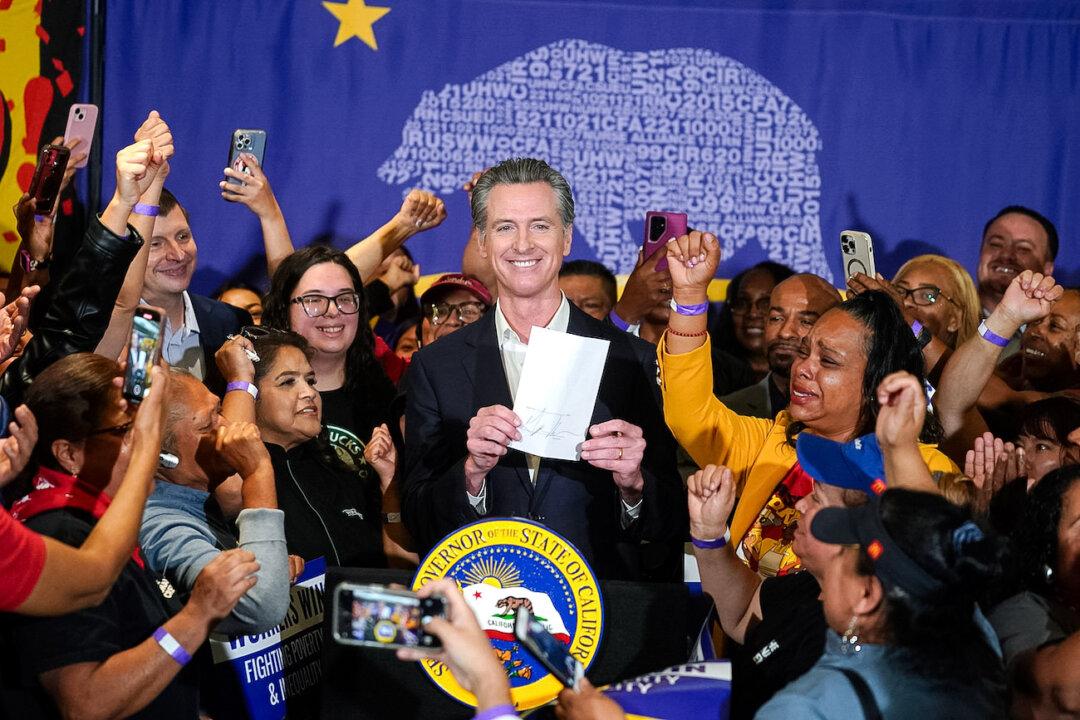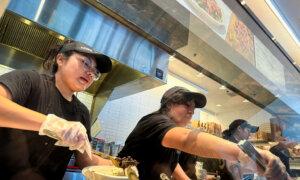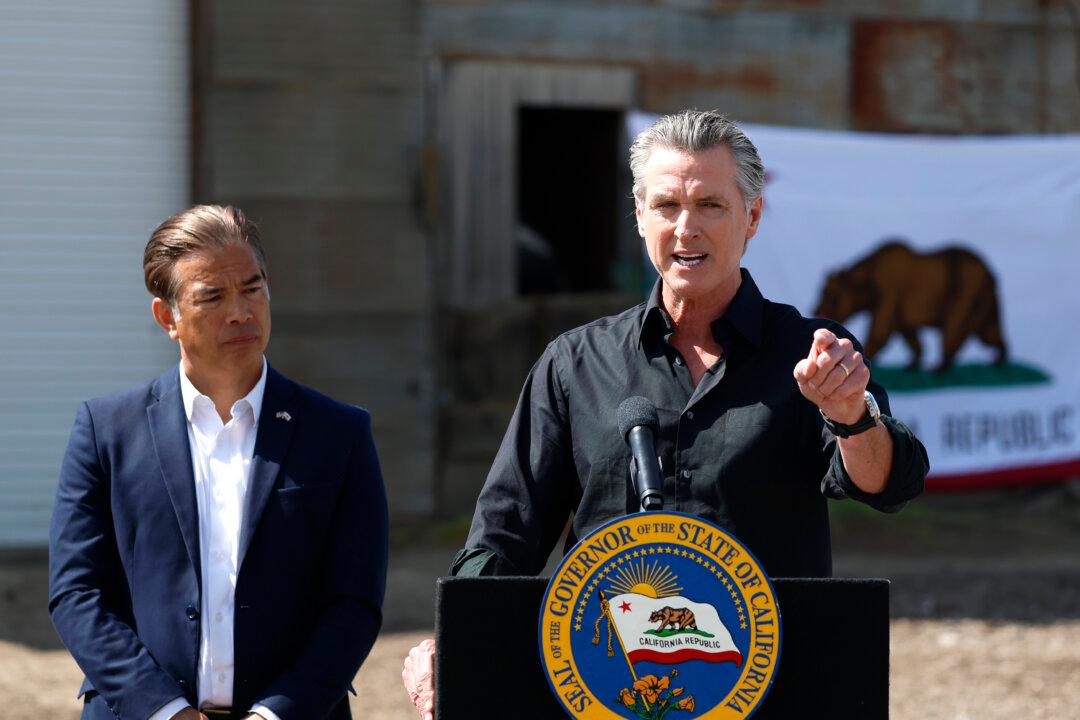The data show five straight months of job growth and an increase of nearly 3,000 jobs in the past year, with about 745,600 employed in the sector in May.
“This means California not only saw job growth month to month, but also year over year—and importantly growth during the first two months of the $20 min wage law being in effect—despite what corporate trade groups are attempting to push,” Brandon Richards, spokesman for Gov. Gavin Newsom’s office, told The Epoch Times by email on June 26.
The ad included blurbs about 12 fast food companies, including the closure of 48 Rubio’s locations and the termination of 1,200 Pizza Hut delivery drivers after the law was enacted.
While jobs did decrease between September 2023 and January, that follows seasonal patterns of decline observed in the data for each of the past 10 years.
Those numbers show a relatively flat line in recent months for fast food jobs, with a slight drop of about 50 jobs in May bringing the total to more than 739,800. Year-over-year, however, the report shows a gain of more than 3,000 jobs.
Discrepancies in the labor statistics and Federal Reserve data can be accounted for in the two agencies’ methodologies. The prior uses nonseasonally adjusted data, while the latter adjusts figures based on seasonal norms.
While the data fail to show a significant loss of jobs since the law took effect on April 1, the trade group believes the industry will be hurt, although the effects could be slow in manifesting.
“Bad policy remains indefensible, and workers and businesses are suffering for it,” Mr. Manzo told The Epoch Times.
The governor’s office said both sets of data suggest the earlier reporting—from the Hoover Institution and the New York Post, among others—was wrong and relied on old, irrelevant data.
“So they admit the fast food minimum wage increase hasn’t killed thousands of jobs since it was implemented as they initially claimed, and even presented as fact in a paid advertisement,” Mr. Richards said. “And now, when the raw numbers they previously used don’t fit their corporate narrative, they switch to a different set of numbers.”
Determining the effect of the law is challenging, given the short time frame since the law was enacted, with a difference of opinions between business and labor groups.
After the law took effect, several managers of various fast food establishments told The Epoch Times that labor hours are being managed carefully and fewer new hires are expected.
“We’re ... reducing hours and the amount of people working,” said Kevin Cortez, general manager of a Wendy’s location in Northern California.
While multiple restaurant managers echoed his comments, it’s unclear how many hours were cut across the industry or how many of the jobs gained were part-time.
Some businesses are looking to increase automation of certain processes using robots and artificial intelligence to reduce the number of employees needed.
Others, including Taco Bell and El Pollo Loco, have installed kiosks in lobbies to take orders, allowing employees to work in the kitchen and perform other tasks.
Many have raised prices in response, with restaurants in California charging more than similar businesses in other states.
McDonald’s iconic Big Mac meal is now priced at $13.69 in California, nearly $5 more than in Texas, where the average price is $8.79, according to Grubhub.
“Part of that [price discrepancy] is because of the impact of what we’re going to have to work through in California ... and the significant wage increases,” Ian Borden, executive vice president and chief financial officer at McDonald’s, said in a February earnings call. “We certainly know consumers are more wary or weary of pricing, and we’re going to continue to be consumer-led in our pricing decisions as we kind of look forward to 2024 and knowing that the environment will continue to be competitive.”
Some executives are concerned that as prices increase, foot traffic could decline.
“As we look to 2024 with elevated ... prices and muted consumer confidence, we believe that consumers will continue to be more discriminating with their dollars,” Chris Kempczinski, president and CEO of McDonald’s, said in the earnings call.
But not all is related to labor costs, according to multiple managers, as the wholesale cost of food—which has increased 29 percent since February 2020, according to Bureau of Labor Statistics data—and rent are also primary factors in determining menu prices.







